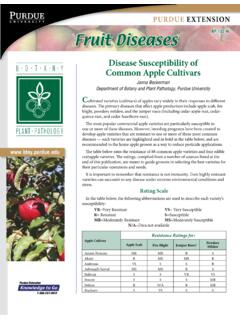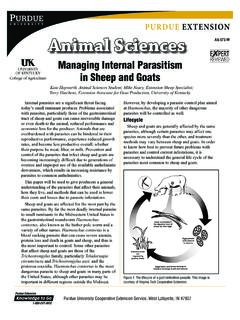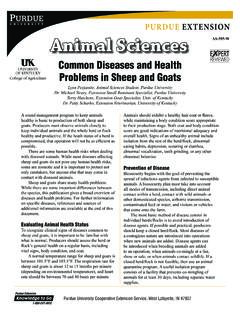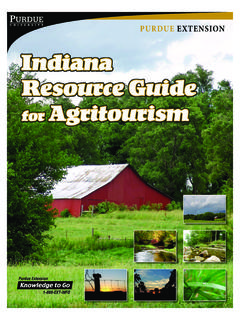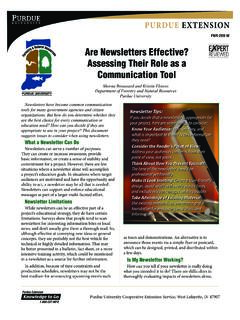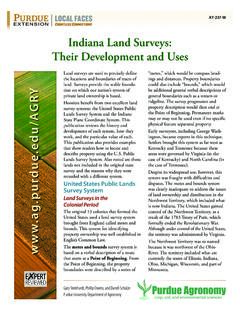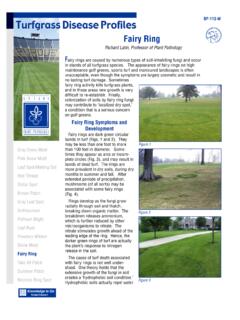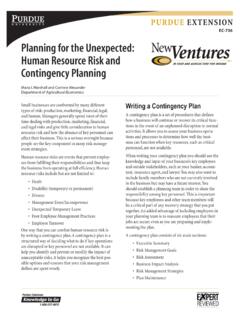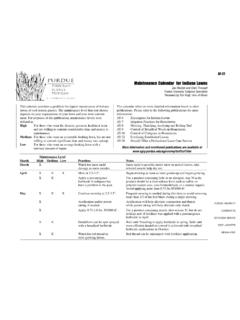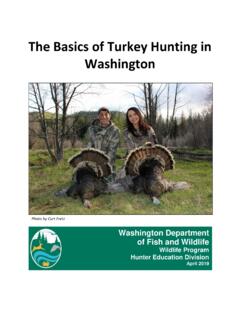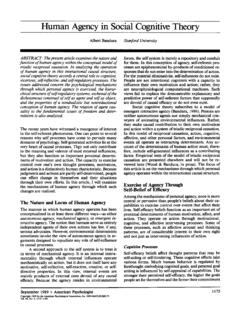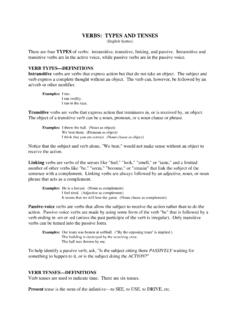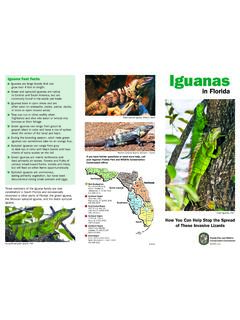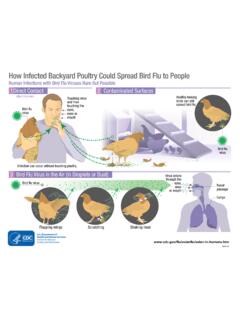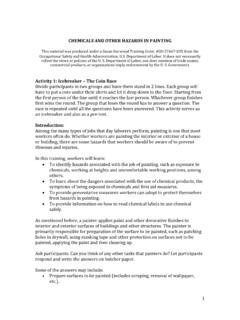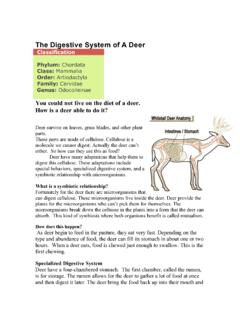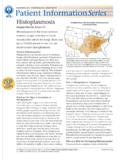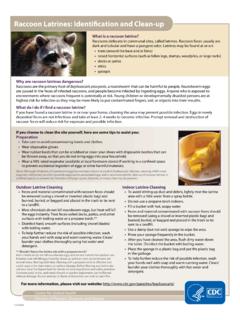Transcription of A Pest Control Program - Purdue University
1 Purdue ExTENSIoNSafe food guidelines for small meat and poultry processorsFS-22-WThe common housefly is a known carrier of diseases and pathogens, including listeria and salmonella. The housefly vomits stomach fluid onto its food and sucks up the dissolved nutrients. Flyspecks are dried vomit and fecal material. It has been estimated that in a six-month period, a pair of houseflies and their descendants would total 191,000,000,000,000,000,000 if all the offspring survived. Actual numbers of surviving offspring are much Pest Control ProgramKevin Keener, , process engineer, Extension specialist, and associate professor of food scienceIntroductionBasic pest Control in the food processing plant is an essential prerequisite food safety Program .
2 Unfortunately, many processors have never established a systematic, written pest Control Program . This fact sheet outlines the pests of concern and steps that the small processor can take to start a pest Control What is a pest Control Program ?All meat and poultry processing facilities, regardless of size, must have a written Sanitation Program . One section of the Sanitation Program (9 CFR (a), ) is the Control of pests: insects, rodents, and birds. GMPs (Good Manufacturing Practices) specified in the Code of Federal Regulations (CFR) clearly specify that pests cannot be present in the food-processing environment (CFR Title 21, Part ). To prevent infestation, the processor must create a proactive Program for stopping these pests from threatening the safety and quality of the What is a pest Control Program ?
3 2. Common pests in the food Flying Pest of stored Bird pests3. Integrated pest management4. Verification of pest Control programs5. Action steps for the processor2A Pest Control Program (FS-22-W)The pest Control Program is considered a prerequisite Program . It is necessary for a plant to implement a pest Control Program to prevent adulteration of product. It is a necessary part of the total plant food safety pest Control Program is a stand-alone Program and is also a part of the plant s food safety system. Most small food plants must decide whether to maintain a pest Control Program themselves or contract the Program to a pest Control company.
4 There are positive and negative aspects of each approach. Table 1 lists some things to small processing facilities hire a pest Control company because the processor lacks the personnel and expertise to run such a Program . Of course, a pest Control contractor should be reputable and have proper training and experience. A pest Control contractor must provide records and reports to the processor verifying that the Program is effective and operating successfully. This verification is usually done through visual inspection for pests and/or evidence of pests in the plant or product. The processor must maintain these records with the plant s hazard analysis records to prove that the contracted pest Control Program is effective.
5 The verification records should include evidence of contractor training and certification to apply pesticides in a food-manufacturing environment, and evidence that the pesticides are approved for such processors choose to develop and maintain a pest Control Program themselves. An effective Program can be developed in-house if the processor understands how to Control pests. The Program would consist of several written s Department of Entomology offers six self-study, online courses in pest management ( ), including one on pest management in food included in a pest Control program1. Pest Control procedures The activities performed to Control each type of pest.
6 The written procedures should be detailed and include frequency of Recordkeeping The documentation of each performed activity. These records must be accurate, up-to-date, and include inspection for evidence of pests in each plant Responsible individuals The person(s) who are charged with performing pest Control procedures and recordkeeping. Also, the supervisor responsible for signing off on reviewed Deviation Evidence of a pest problem is a subjective determination that requires expertise. For example, periodically finding a cockroach under a trashcan may be acceptable, but finding many cockroaches would be a deviation. A deviation has occurred when an allowable limit has been Corrective measures These are written action steps in the plan that will be performed if there is a deviation from the pest Control Program .
7 Often, they may include increasing Control procedures, retraining of employees, cleaning up the area, 1. To create a plan or contract with an outside pest controller?Processor-supported Program Contracted programUpfront cost Lower, usually HigherProcessor time commitment High Virtually nonePest Control expertise Low, usually HighRecordkeeping Processor supported Contractor supportedEquipment and chemicals Processor must obtain Contractor suppliesValidation materials Processor obtains Contractor suppliesOverall benefitsMust be evaluated by the processor, taking into account all the factors necessary to develop and maintain the program3A Pest Control Program (FS-22-W)6.
8 Verification and validation Written scientific evidence that the procedures are effective at controlling pests. This material is often available from chemical, trap, and pest Control equipment makers. Also, verification is documentation of visual inspection for evidence of Common pests in the processing plant and ways to Control CockroachesThere is no insect, other than the housefly, that is more easily recognized and detested than the cockroach. Cockroaches have been shown to transmit diseases including pathogenic foodborne bacteria such as salmonella, Vibrio cholerae, Staphylococcus aureus, and others both in the insect s gut and on its exterior the insects or their eggs cases).
9 This is done by sealing and filling cracks and crevices and maintaining a sealed, smooth surface throughout the plant in production and nonproduction areas. Seal junction boxes, receptacles, and Control panels. Seal openings around conduits and pipes where they pass through walls and ceilings. Inspect incoming shipments (packaging, ingredients, etc.) and reject infested shipments. Chemical Control requires that EPA-permitted insecticides be used in the food plant. These products are generally formulated as sprays, aerosols, or dusts. Dry powders and dusts, such as boric acid and insecticide powders, take advantage of the cockroaches habit of preening themselves. It is important to understand that no pesticide can be used in a food processing plant unless EPA has approved such Flying insectsThe most common flying insects are the housefly and fruit fly.
10 A single housefly has been estimated to carry up to million bacteria. Flies transmit disease by spending part of their life in direct contact with or in close contact to fecal matter or decaying material. Flies must liquefy their food before ingestion, so they secrete salvia (often called vomitus) on surfaces. The movement of flies from unwholesome food sources to fresh food products, processing equipment, and other surfaces provides many opportunities to transmit disease-causing and elimination of breeding sites is a key to fly Control . This primarily involves the availability of garbage. Garbage must be located away from doors and removed frequently, and waste disposal areas must be properly maintained.
